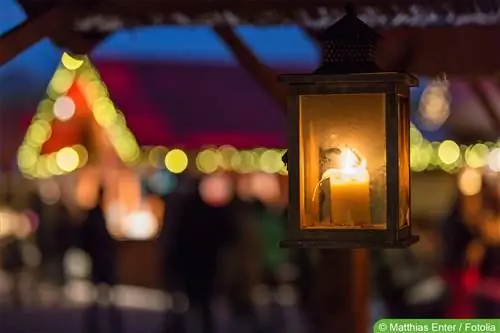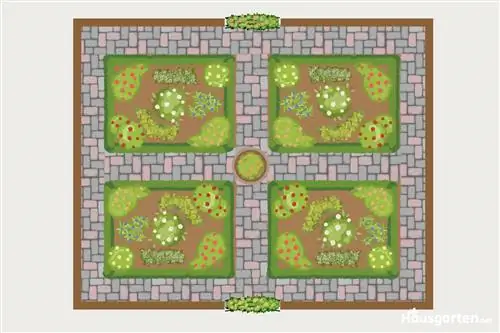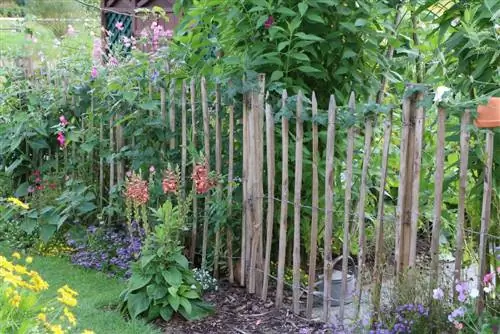- Author admin [email protected].
- Public 2023-12-17 03:39.
- Last modified 2025-01-24 12:45.
In order to feel comfortable in the winter garden, atmospheric lighting is recommended. You can find 12 ideas for the creative use of various lamps and light sources in this article.
Indirect lighting of winter garden
The most important point for atmospheric lighting in your winter garden is the placement of the lamps and light sources. Since winter gardens are structural extensions of the house that use a lot of glass, annoying reflections of light can quickly occur. These have a disruptive effect on the mood. To prevent this problem, indirect lighting is recommended. What does that mean? They use various setup methods to make the light as pleasant as possible.
This primarily includes two factors:
- Lamps place cleverly
- suitablelight colorschoose
Especially in winter gardens, you always have to pay attention to the placement of the lamps. Ideally, they are hidden in close proximity or behind furniture that blocks most of the direct light beam. This illuminates the winter garden atmospherically without causing any reflections. You should also use materials such as wood or stone, for example the roof struts of the winter garden, to reflect the light. In this way, you can fill the room with enough light without the risk of direct reflections. Think in advance about which positions the lamps should take for lighting.
Note light color
As already mentioned in the previous section, you should choose the right light color for atmospheric winter garden lighting. Aside from indirect winter garden lighting, you can use the light colors atmospherically to create a specific mood. For example, white light is often perceived as cold and is therefore better used in offices. If you often work in the winter garden, you can of course use this light color. If you want to achieve a different effect instead, use the following table:
- yellow: brightens mood, promotes creativity
- orange: revitalized, relaxed
- red: stimulates
- green: calms
- blue: increases well-being, promotes sleep
Use dimmable bulbs
In combination with the light color and indirect lighting, the use of dimmable lamps is also recommended. The idea behind it is to regulate the light intensity as desired. Dimmable bulbs allow you to regulate the light intensity, which means you can better show off different light colors as you wish. For example, if you install yellow mood lighting, a dimming function can soften the effect. The mood-enhancing properties of the light are retained and combine with a relaxed aura as it becomes slightly darker. Even white light can be harmoniously integrated into the loggia in this way. Dimmable bulbs can even be used to transition from one light color to another.
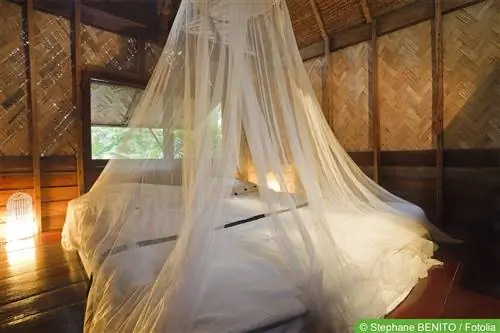
Dreamy lighting: Dreamlights
The modern highlights of atmospheric winter garden lighting include so-called dream lights. These are LED spots that are installed in the beams or roof of a winter garden. Since several spots are used, indirect lighting is created that is reminiscent of a starry sky, which explains the name. Due to their size, you can easily adapt the spots to the shape of your winter garden.
Tip:
Use LED ground spots for parts of the winter garden that do not support ceiling lighting. You can effectively illuminate these corners using floor spotlights.
Use mood lamps specifically
Regardless of the size of the winter garden, you should not be afraid of using mood lamps. These are smaller lamps in different designs that you can place as you wish. At first glance, they remind you of a bedside lamp, which makes them easier to use. If you still need space for a lamp next to your winter garden sofa, you can use the mood lamps for this. There are a few points that you should consider when choosing a mood lamp in order to integrate it harmoniously into the winter garden:
- Shape
- Design
- Light color
- Radius of the glow
Ceiling floodlights or pendant lights?
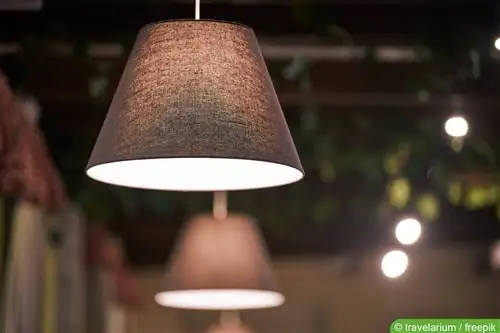
The classics of winter garden lighting include pendant lights and ceiling floodlights. An uplighter is a floor lamp that has a large bulb that emits light upwards. This means that a large area is indirectly lit, which creates a pleasant atmosphere in the winter garden. A pendant light is attached to the ceiling. It differs from other ceiling lights in its significantly lower position in the room. They are ideal for accentuating individual areas such as tables. You can even combine the two types.
Numerous possible uses: wall lights
As an alternative to ceiling floodlights or pendant lights, you can use wall-mounted lamps. They distribute the light on the wall before it enters the room. This tones down the intensity and often creates a relaxing mood. Due to the extensive selection of models, you can find specific lamps that fit perfectly into the ambience. Pay particular attention to the direction of the light, as these have a completely different effect:
- Downlight (down): Focus on objects or areas
- Uplight (up): basic lighting
Programmable LED strips
As a modern alternative, you can use LED strips. These are light strips that you attach in different ways:
- Glue
- Adhesive tape
- Nails

No drilling is necessary, which makes using the light strips much easier. They are available in different lengths, which means they can be selected individually to suit the shape of the winter garden. The programmable LEDs allow the light color to be adjusted precisely. With RGB LEDs, for example, over 16 million color tones are available, meaning that each light strip has exactly the desired light color. In this way you can emphasize individual areas in the winter garden or support a certain ambience.
Effective: fairy lights
If you prefer a playful atmosphere, you can use fairy lights to illuminate the winter garden. Fairy lights have the great advantage that they can be installed and put into operation without much effort. They are also available in numerous colors, lengths and bulb sizes, which has a significant impact on the desired mood. For example, you can create an entire sky made of lights without a permanent installation. How about a wall of hanging fairy lights in your favorite light color? With a little creativity, you can attractively integrate fairy lights. Since the lamps are often small, possible reflections are reduced. This means you can even hang individual windows with the chains.
Lamps with character
A special atmosphere in winter gardens can be created using lamps with a unique character. What does that mean? There are different types of lamps that fall into this exact designation. Vintage or designer lamps are most commonly referred to when you are looking for something special. For example, if you have decided on an opulent winter garden ambience, even large lamps such as a chandelier or cast iron lanterns can be used to provide plenty of light. Maybe you prefer a minimalist style because you use the loggia as a meeting space? Then works of art that draw attention to themselves are recommended. Let your imagination run wild to choose the lamp that matches the character of the winter garden.
Note:
Try retro light bulbs or brightly colored options as an accent. They are ideal for creative use in a variety of conservatory designs, including romantic or vintage concepts.
Illuminate plant pots
An often overlooked point of atmospheric winter garden lighting is the staging of plant pots. Winter gardens are often used to store plants all year round, which is something you should take advantage of. You can either purchase illuminated plant pots or LED spotlights that are integrated into the pot. In this way you create a special accent that is particularly suitable for dark corners that are otherwise difficult to illuminate. An example is clusters of several plant pots with large evergreens that absorb a lot of light. Since they are mostly battery-operated pots or spots, you can place them away from a power source, making them versatile.
Don’t forget the garden lighting
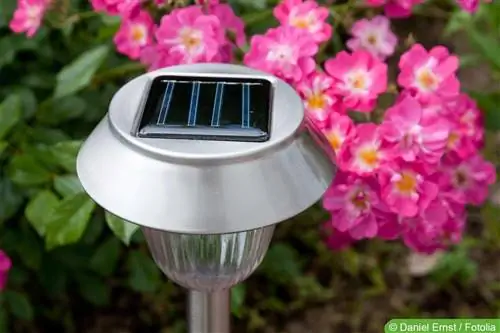
So that the winter garden lighting is not cut off from the garden or the rest of the property, you should also think about using attractive lamps outside. Since winter gardens are used as an atmospheric transition between the house and the garden, outdoor lighting is recommended. To do this, use various lamps that emit a soft light and draw attention to the winter garden. This idea can be used particularly effectively on large properties where dark zones can quickly arise. Either surround the loggia with lamps or lead it towards the building while using different colors of light for a harmonious interaction. The following lamp types are particularly suitable for this:
- Ground spike spotlight
- Bollard lights
- LED garden torches
- Ground spots
- weatherproof LED strips
Note:
Incorporate the roof overhang of the winter garden into the garden lighting. This provides more light, which creates smoother transitions.

